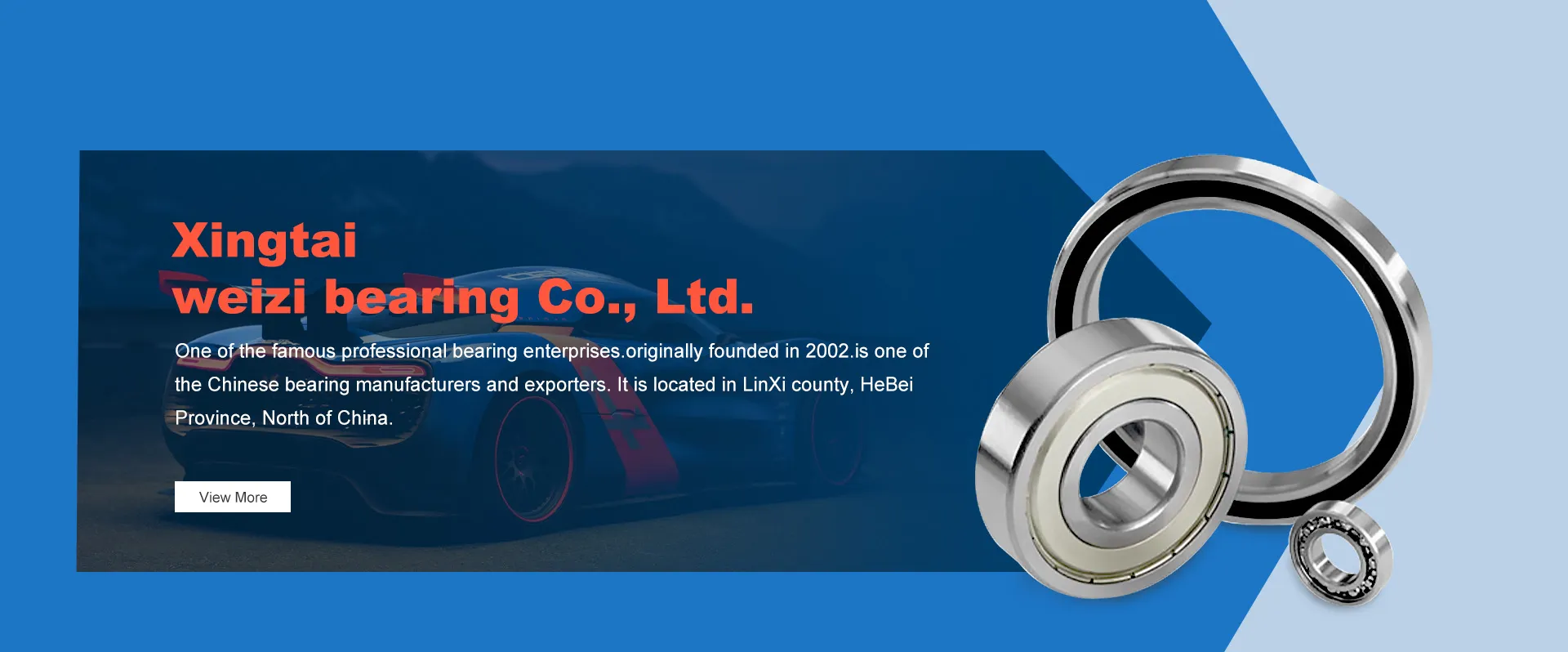
ನವೆಂ . 19, 2024 12:44 Back to list
Understanding the Dimensions of 6203 Bearing Balls for Various Applications
Understanding the 6203 Bearing Ball Size
Bearings are essential components in machinery that facilitate smooth motion between parts. One of the most common types of bearings used in various applications is the 6203 ball bearing. This article will explore the key aspects of the 6203 bearing, including its dimensions, applications, and characteristics.
What is a 6203 Bearing?
The 6203 bearing is a type of deep groove ball bearing, which is a versatile design widely used in numerous industries. The 6203 designation refers to specific dimensions and load-bearing capacity. This bearing typically consists of an inner ring, an outer ring, a set of balls, and a cage that holds the balls in place.
Dimensions
The dimensions of a 6203 ball bearing are standardized, making it easy to source replacements or integrate them into machinery. The typical measurements for a 6203 bearing are as follows
- Inner Diameter 17 mm - Outer Diameter 40 mm - Width 12 mm
These dimensions allow the 6203 bearing to fit into various applications requiring a reliable rotational element. Manufacturers often provide variations of this bearing, including different sealing options or materials, to cater to specific needs.
Load Capacity and Speed Ratings
The load capacity of a 6203 bearing is crucial for its performance in applications. The dynamic load rating, which indicates how much load the bearing can handle while in motion, is approximately 6,300 N (Newtons), while the static load rating stands at around 3,200 N. These values make the 6203 bearing suitable for moderate load applications.
The bearing also has a maximum speed rating of around 15,000 RPM (Revolutions Per Minute) when properly lubricated. However, actual operational speeds can vary based on factors like load conditions and lubrication quality. It’s essential to consult manufacturer specifications to ensure optimal performance.
6203 bearing ball size

Applications
The 6203 bearing is utilized in a wide array of applications due to its balanced design
. Common uses include- Electric Motors The 6203 bearing is frequently found in induction motors and other small electric motors due to its ability to handle both radial and axial loads.
- Household Appliances Many appliances, such as washing machines and vacuum cleaners, incorporate 6203 bearings to enable smooth operation.
- Automotive In the automotive sector, the 6203 bearing can be found in wheels, alternators, and differentials, where its reliability is crucial for safety and performance.
- Industrial Equipment Various types of machinery, including conveyor systems and pumps, use 6203 bearings, proving their versatility and dependability.
Characteristics
One of the defining features of the 6203 bearing is its deep groove design. This design allows the bearing to accommodate both radial and axial loads, making it highly functional for dynamic applications. Additionally, manufacturers offer 6203 bearings with different sealing options—such as metal shields or rubber seals—to protect against dirt and moisture, extending the bearing's lifespan.
Furthermore, the materials used in the production of the 6203 bearing significantly affect its performance. Common materials include high carbon chrome steel, stainless steel, and ceramics, each offering distinct advantages based on the environmental conditions and application requirements.
Conclusion
The 6203 ball bearing is a fundamental component across various industries due to its reliable performance, standardized dimensions, and versatility. Understanding its specifications—such as size, load capacity, and applications—can help engineers and manufacturers choose the right bearing for their specific needs. Whether in household appliances, automotive applications, or industrial machinery, the 6203 bearing continues to play a pivotal role in ensuring efficient and smooth operations. By considering factors like lubrication, sealing options, and material choice, users can maximize the lifespan and performance of these essential devices.
Latest news
-
Grooved Ball Bearing Design and Functionality
NewsJun.04,2025
-
Concrete Mixer Bearing Load Capacity Testing
NewsJun.04,2025
-
6004 Bearing Dimensions in Robotic Joint Designs
NewsJun.04,2025
-
Advantages of Single-Row Deep Groove Ball Bearings
NewsJun.04,2025
-
Applications of Deep Groove Ball Bearings in Automotive Systems
NewsJun.04,2025
-
Innovations in Bearing Pressing Machine Design
NewsJun.04,2025
